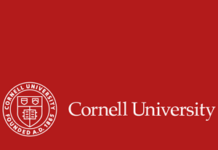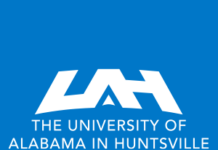 Recently, the nation’s highest-ranked colleges and universities informed applicants if they had been accepted for admission into the Class of 2023. Some of these institutions have become extremely selective, accepting less than 10 percent of all applicants. Some of the nation’s most selective institutions provided acceptance data broken down by race and ethnicity.
Recently, the nation’s highest-ranked colleges and universities informed applicants if they had been accepted for admission into the Class of 2023. Some of these institutions have become extremely selective, accepting less than 10 percent of all applicants. Some of the nation’s most selective institutions provided acceptance data broken down by race and ethnicity.
Harvard College has admitted 1,950 students to its Class of 2023. African-Americans make up 14.8 percent of the admitted students.
At Brown University in Providence, Rhode Island, 38,647 students applied for admission, making it the university’s largest applicant pool to date. The college accepted 2,551 students, or 6.6 percent, into its Class of 2023. Out of all the admitted students, 49 percent identify as students of color.
The University of Pennsylvania accepted 3,345 students from a pool of 44,960 applicants, which is a 7.4 acceptance rate. Some 51 percent of the admitted students are people of color.
Princeton University in New Jersey accepted 1,895 students from a pool of 32,804 applicants, which is a 5.8 acceptance rate. People of color make up 56 percent of the admitted Class of 2023.
Cornell University in Ithaca, New York, admitted 5,183 students from an applicant pool of more than 49,000 students, bringing its overall admission rate to 10.6 percent. Out of all the admitted students, 32 percent are underrepresented minorities.
From a pool of 23,650 students, Dartmouth College in Hanover, New Hampshire offered admission to 1,876 students, or 7.9 percent of applicants. Nearly half of the admitted students are Americans of color.
The University of Virginia admitted 9,725 of its 40,815 applicants, resulting in a 24 percent acceptance rate. A record 40 percent of accepted students are from underrepresented groups.
Emory University in Atlanta, Georgia, received 30,017 applications for its Class of 2023. More than 4,500 students were admitted to Emory College on the Atlanta campus and 3,432 students were accepted to the university’s Oxford Campus where they will study for two years and then transition to the Atlanta campus. Underrepresented minorities make up 32 percent of all admitted students.
Tufts University in Massachusetts accepted 14.6 percent of a record 22,766 applicants into its Class of 2023. Out of the admitted students, 6.5 percent identify as African-Americans.
Amherst College in Massachusetts accepted 1,144 students, or 11 percent, from its 10,567-member applicant pool. African-Americans make up 21 percent of the admitted students.
Williams College received 9,715 applications for its Class of 2023 and accepted 1,205 students, or 12.4 percent of all applicants. Of the admitted students, 58 percent identify as students of color.
Pomona College in Claremont, California, accepted 726 students into its Class of 2023. Out of the admitted class, 13.6 percent of students are Black.
Wesleyan University in Middletown, Connecticut, accepted 2,114 students, or 15.8 percent, out of an applicant pool of 13,358 students. Students of color make up 49 percent the admitted class.
Wellesley College, an all women’s institution in Massachusetts, has accepted 20 percent of its 6,488 applicants into its Class of 2023. Some 57 percent of admitted students are women of color.
Barnard College, an all women’s institution in New York, accepted 1,051 students, or 11.2 percent, of its record 9,319 applicant pool. Women of color represent 56 percent of the admitted class.
Mount Holyoke College, an all women’s institution in South Hadley, Massachusetts, has admitted 525 students out of an applicant pool of 3,956 students. Out of all admitted students, 32 percent are students of color.
Macalester College in Saint Paul, Minnesota, accepted 31 percent of students into its Class of 2023 out of an applicant pool of 6,598 students. Of the admitted students, 34 percent are people of color.












It would be interesting to see the breakdown of students “of color” and how many of those are actually African – American.
I too would like to see the breakdown of student “of color”. I prefer if referring to African Americans, Latinx and Native Americans that the term used by the National Science Foundation, historically underrepresented.